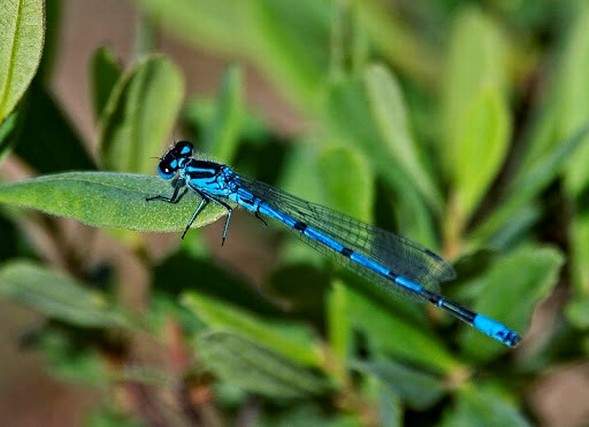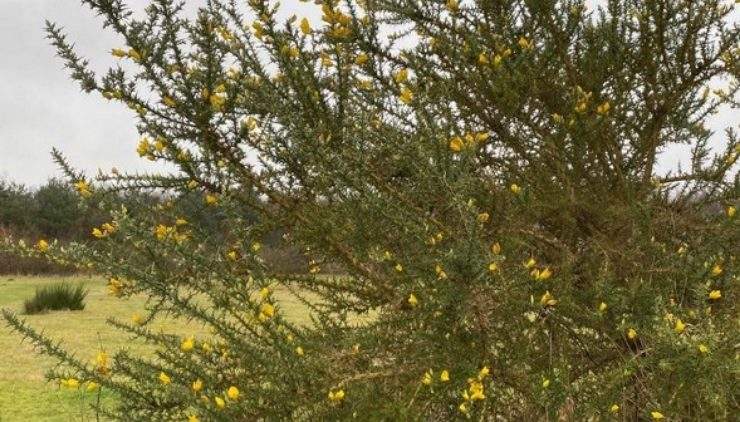April May and June 2020
- Categories:
- Wildlife
Hi Everybody,
I hope you are all safe and well as you read this.
What are you missing most about Kelling Heath?
I am sure there are hundreds of reasons, but for me it is being able to show many of you the amazing nature around the Heath, woods and ponds that make up this beautiful site.

So, what would we expect to find at Kelling this time of year?
April and May have been exceptionally warm here in North Norfolk and very dry. It is raining here now as I write this at the start of June, but we have not had any significant rainfall since May 6th according to the Met Office!
I think I would have to admit that Spring into the start of Summer is really my favourite time at Kelling Heath. Everywhere is so lush and green and we start to spot creatures that mark the start of the warmer seasons.
Bats are now out in force on the heath and around the woodland clearings.
Common Pipistrelle - These very much misunderstood creatures of the night are an endangered species that have declined drastically over the last 50 years due to habitat loss, and agricultural changes which have reduced the number and diversity of their insect prey.
June is the month of Bat Babies. Most female bats give birth to one baby (or Pup) most years but unfortunately the birth rate is not keeping pace with the death rate.
Despite this Kelling remains a stronghold for this amazing creature boasting 10 out of the UK’s 17 species. We know this because we have been able to record and detect numbers accurately with some amazing technology in conjunction with the Norfolk Bat Project.
Bats must put on 25% of their body weight by the end of October to survive the winter. Our most common bat the Pipistrelle is said to be able to catch up to 3000 midges on a summers evening.
I reckon that most of us have a Bat or two over our gardens in the evening. Why not have a look around the garden about 20 minutes after sunset.
A good viewing tip is to sit in a deck chair or lie on a blanket………….
Staying with the sunset, Nightjars have arrived back on the heath.
European Nightjar - If you have never seen them you cannot avoid hearing them at Kelling! More than once I have had people ask me what it is that makes a noise which sounds like drilling in the evenings.
That is really what it sounds like!
Nightjar’s song is often called a Churr and it can carry a surprisingly long way on open heathland.
They arrive in early May to breed from Southern Africa and must cross the Sahara Desert amongst other obstacles to reach us.
Again, this is another creature that is declining with a recent survey putting the male population that visits the UK at less than 5000 males. They can have two broods before heading back south again by mid-August. Being a crepuscular creature – active at dawn and dusk - they have over the years been given an almost mythical status.
The old name for Nightjars is the Goat Sucker as people believed they would milk Goats at night. In fact, they catch moths and flies by hawking from the treetops to just above the Heather.
One of the highlights of my summer at Kelling is the amazing Damsel and Dragonflies that inhabit the ponds.
Around about now we would be seeing Broad Bodied Chasers and the amazing metallic blue of the Common Blue Damsels.
One question I always get asked is “How do you tell the difference between Damsels and Dragons?”
And the secret is to wait until they land. If you check out the pictures above, you can see that Dragonflies cannot fold their wings in when the land whereas Damsels tuck them in behind their backs.
The Conservation pond is one of the best places to see these creatures in action. Some will perch on a reed stem and then dart out and catch a fly while others are constantly on the wing doing some amazing twists and turns and can even fly backwards!
Dragonflies only live about 6 weeks flying around but will have spent two to three years as a larvae crawling along the bottom of the pond until a warm spring or summer day when they emerge from the water and in a few hours change into a flying creature. Once their wings are ready they fly straight up over the trees and hide themselves in the woodland for a few days while they hone their flying skills as, when they return to the water, the males will have to do battle with all the other males for procession of a Lady Dragonfly.
I am hoping later this week to get over the Heath to look for Kelling’s famous Silver Studded Blue Butterflies.
This small Blue and Silver (yes, the male does actually have Silver metallic spots!) Butterfly was extinct in Norfolk and re-introduced in a couple of sites in Norfolk in 2001.
Silver Studded Blue Butterfly - It has a very complicated lifestyle where it relies on a certain Black Ant called Lasius niger who collect its caterpillars and takes them to the safety of their nest, protects them while they pupate and, when the Butterflies emerge from the cocoon, even digs them an escape tunnel!
I have been nature watching for a lot of years and it never ceases to amaze me.
Let us hope this all settles down soon so we can get back to Kelling and enjoy this place of such diversity again………...
Stay Safe Everyone and have a great Summer!
Carl


